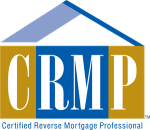How to Pay for Long-term Care Without Insurance
If you’ve started to look into long-term care options, you may have encountered expensive insurance policies that are difficult to qualify for and can take a very long time to pay out. Fortunately, there is an alternative that many older homeowners over the age of 62 should consider – using their home equity with a reverse mortgage growing line of credit.
According to recent studies, up to 70% of Baby Boomers have no retirement savings or have saved less than $50,000. Additionally, nearly 70% of Americans falsely believe their health insurance will pay for long-term care costs. These costs range from $30,000-$150,000 per year. With the high cost of long-term care and limited savings for retirement, it’s no surprise that only 3% of Americans purchase Long Term Care Insurance.
Using your home equity with a reverse mortgage growing line of credit offers many advantages over traditional long-term care insurance policies. Unlike these policies, you don’t need to worry about paying ongoing premiums or risk losing money in paying premiums in a long-term care policy. You don’t need to wait for a death benefit or be subject to an elimination period before being eligible for benefits either – funds can be available in as little as 5 business days with no questions asked. Additionally, no health qualifications are necessary; if you meet the age and home ownership requirements criteria, you can access the funds at any time without submitting any claims or waiting for reimbursements.
 Another great advantage of using your home equity with a reverse mortgage growing line of credit is that it allows you complete control over how much money you borrow and when you borrow it – giving you more flexibility than a traditional policy would provide. Plus, any unused funds will remain available for future use if needed!
Another great advantage of using your home equity with a reverse mortgage growing line of credit is that it allows you complete control over how much money you borrow and when you borrow it – giving you more flexibility than a traditional policy would provide. Plus, any unused funds will remain available for future use if needed!
Conclusion: Using your home equity with a reverse mortgage growing line of credit is an excellent way for older homeowners ages 62 years and older to look at ways to pay for long-term care without purchasing an expensive insurance policy. This option offers numerous advantages over traditional policies, including no ongoing premiums or health qualifications required and fast access to funds without waiting for an elimination period or submitting claims before receiving reimbursements. Plus, this option allows homeowners complete control over how much money they borrow and when they borrow it – giving them more flexibility than traditional policies! Consider taking advantage of this opportunity to feel secure, knowing that all your future long-term care needs are taken care of!
If you’re a homeowner over the age of 62 and are in need of long-term care, it's time to take control of your future and ensure that you have access to the resources needed to take care of yourself or your loved ones. Speaking with Angella Conrard, CRMP can help you understand how using a reverse mortgage to pay for long-term care may be a viable option.








